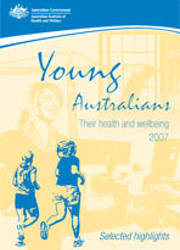Young Australians: their health and wellbeing 2007 found that while most young people in Australia are doing well, there are areas where further gains in health and wellbeing could be achieved.
Among the positive health trends discussed in the report is a significant decrease in death rates—death rates among young people aged 12–24 years halved between 1980 and 2004, largely due to decreases in deaths due to injury, including a 40% reduction in suicide deaths since 1995. Large declines have also been observed over the last decade in notification rates for a number of communicable diseases including measles, rubella, Hepatitis A and B, and for meningococcal disease since 2003. The prevalence of some chronic conditions, notably asthma and melanoma, has also declined over the last decade. There have also been positive trends in education, with increasing proportions of young people staying in school to Year 12 and gaining a post-school qualification.
Areas where further gains in health and wellbeing could be achieved include mental health problems, which accounted for almost half of the total disease burden in 2003. Overweight and obesity have also increased in recent years. Coinciding with these increases, less than half of young people met the recommended physical activity guidelines in 2004–05, and only a minority met the daily vegetable consumption guidelines. Almost one-third of young people drank alcohol in amounts that put them at risk or high risk of alcohol-related harm in the short-term in 2004, and around 17% were current smokers. There have also been concerning trends in the notification rates for sexually transmitted infections such as chlamydia and gonococcal infection, which have increased substantially over the last 10 years. The unemployment rate for young people continues to be higher than the national average—12.5% for 15–19 year olds and 6.3% for 20–24 year olds compared with a national rate of 4.4%.



